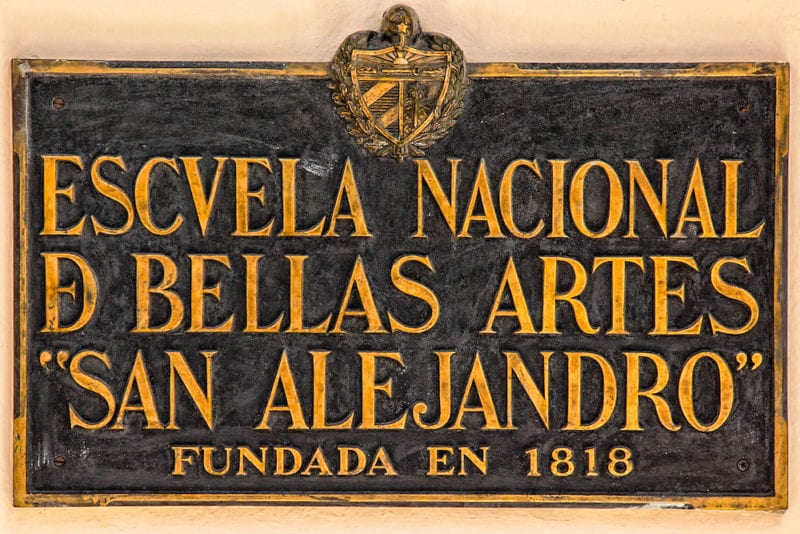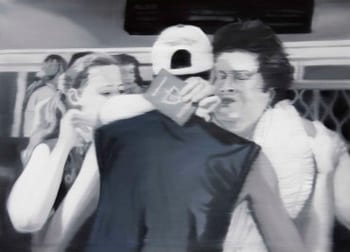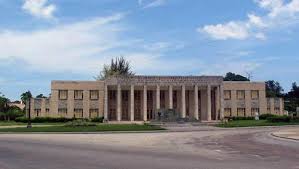A Young Teacher Speaks of Cuba’s Oldest Art Academy
Yanelys Nuñez Leyva

HAVANA TIMES — On the occasion of another anniversary of Cuba’s San Alejandro Arts Academy – celebrated this past January 18 – we conversed with Aluan Arguelles, one of the institution’s youngest teachers, to get to know how this, Latin America’s oldest school of its type, operates internally.
HT: Is the San Alejandro Arts Academy an important reference for art education in Cuba today?
ALUAN ARGÜELLES: The San Alejandro Arts Academy is a two-hundred-year-old institution and, as such, an obliged reference for the country’s arts education system and for the history of Cuban art and culture. Today, as a result of changes and the fact the school was incorporated into the Natioanal Art Schools Center (CNEart), the institution has become an official reference for the system, as the programs of studies offered by the other art schools in the country are prepared and tried out at San Alejandro first. Also, our school has highly specialized faculties and workshops that are unique in the country at this level of schooling.
HT: What is the admittance process like?
A: It involves aptitude exams, which are nothing other than a sample of the skills an applicant may or may not have. These include life and creative drawing, painting, sculpture and a general culture test which recently became an oral exam.
HT: What kinds of students apply to enrol in the school?
A: Well, the school is completely open in that sense: anyone with the skills, aptitudes and sensibility needed for art can enrol. Only those people who do not meet the age requirements established by the academy are disqualified. Before, a broader range of people applied because the school offered courses for people who work and high school graduates, but those courses ceased to be offered some time ago.
 HT: How does San Alejandro cope with the lack of resources the country faces?
HT: How does San Alejandro cope with the lack of resources the country faces?
A: San Alejandro is not immune to those shortages. However, I can’t fail to mention the efforts that the school makes every year so that new students can start their courses with a decent set of materials. Not having dream materials – and this is something I tell my students all the time – cannot restrict our creativity too much. It may be one of the attractive features of the creative process that artists trained in Cuba go through. As teachers, we are constantly forced to look for alternatives and solutions that fit the program of studies, without eliminating important exercises from the syllabus.
HT: In your experience, first as a student and then as a teacher in the academy, do you feel any significant changes have taken place in the school?
A: There’s always changes. After I graduated in 2002, a digital art faculty and a serigraphy workshop were created. They also set up the Cascarilla teaching project and repaired the school’s two galleries completely.
HT: What do the teachers aim at with the different courses offered at the school?
A: Our staff is highly varied. It is made up by teachers with many years experience at the school and by others who are very young and graduated from the academy recently. However, despite our large differences, we all pursue the same thing and share one aim: that students graduate with the tools and preparation they need for their careers.

HT: What do you try to offer your classes, specifically?
A: Currently, I work with Julio Cesar Moracen, teaching sculpture to first year students. From the start, we try to get them to read, to prepare them to become Cuban artists, persistent and not naive. We want for them to become professionals, always critical of their work and, most importantly, hard workers.
HT: Where can we see the school work they do?
A: Students at San Alejandro have many priviliges. The Ludwig Foundation is one of the venues that displays student work through exhibitions, conferences and other types of events. There’s also the Covarrubias gallery of the National Theater, the Provincial Arts Center (on the intersection of Luz and Oficios, Old Havana) and some municipal galleries.
There’s also a project headed by Profesor Pulido, in the low-income neighborhood of Dionisia, Vedado. There, students do public art, setting up sculptures made of alternative and recycled materials.
Of course, the academy is also a venue for student exhibitions, though now the galleries we have are underused, lacking regular programming, and students seldom have access to them to exhibit their works.
HT: At what stage of their artistic career, in your experience, do students of San Alejandro find themselves upon graduation?

A: During all of their courses, students at San Alejandro have a certain amount of contact with the real world of the Cuban artist as, just like their colleagues, they are faced with a creative process limited by material shortages and a lack of exhibition spaces. This contributes to their formation.
But, it’s like everything else. Some take advantage of their education, others do not.
HT: What’s missing in San Alejandro?
A: More activity, more interaction with the public. It lacks a more ambitious plan. It needs to become more professional and connect with the world, continue updating its programs of studies, to be on a par with the world’s best art academies.

Greetings from Los Angeles!
I am a visual artist and Director of Visual Arts at an international school here in LA. I have been reading a lot about Cuban history, its culture and architecture. As an American I am very excited about the opening of relations between our two countries, including what this will mean to artistic exchanges and the availability for you to more resources (hopefully!) I am pleased to know more about San Alejandro, whose history is both impressive and historic. Thanks for your article, and best of luck to all the students who are pursuing their creative dreams, even against the odds. I agree, that sometimes a lack of resources is the best catalyst for creativity!!
Elizabeth Gill Lui